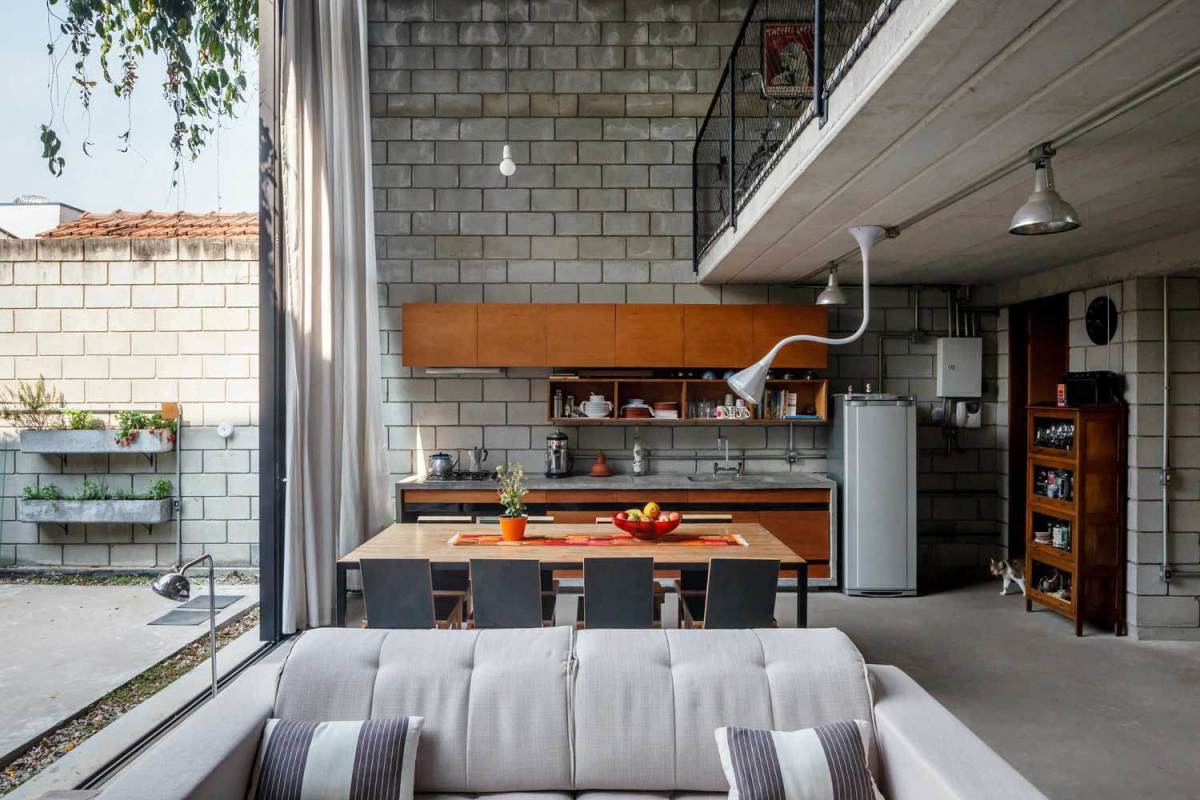#7892. Industrial Minimalism with Open Floor Plan: Concrete and Wood in Dialogue with Nature

This interior presents a magnificent example of industrial minimalism with an open floor plan, skillfully integrated into the surrounding space. The concrete block walls, left in their natural texture, become the dominant design element, creating an industrial aesthetic while serving both structural and decorative purposes.
The kitchen-dining area is organized on the principle of functional laconicism: medium-toned wooden facades create a warm contrast with the cool texture of concrete. Suspended upper cabinets and open shelves provide both storage and display of household items, embodying the principle of "honest design," where functionality is not hidden but becomes part of the aesthetics. The gray work surface harmoniously complements the overall color palette of the space.
The dining area with a wooden table and strict dark chairs becomes the central element of the space, organizing the home life around it. A light-colored soft sofa with characteristic striped pillows creates a cozy contrast with the dominant industrial textures. Special attention deserves the high ceiling with a mezzanine or loft level, which visually expands the space and adds an additional dimension to the interior.
The connection between interior and exterior through panoramic glazing is noteworthy, blurring the boundary between internal and external space. The inner courtyard with minimalist landscape design and containerized plants becomes a natural extension of the interior. When designing the facade of a country house, such a solution with abundant glazing and integration of interior space with the exterior could become a key element of design.
Lighting is organized on multiple levels: minimalist pendant lights above the kitchen work area, a simple bracket lamp for directed light, and natural lighting through panoramic windows. This approach ensures functionality and creates various lighting scenarios throughout the day.
This interior demonstrates how raw building materials can become an expressive decorative element, and thoughtful functionality turns into an aesthetic statement. There is a balance between industrial rigor and homely comfort, achieved through a combination of textures, proper organization of space, and connection with the natural environment.